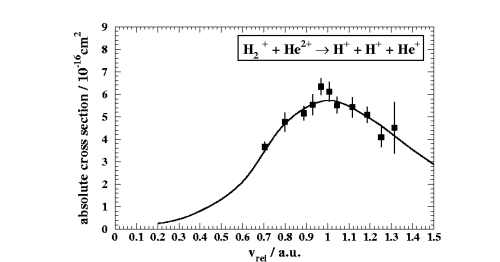
Figure 1: Total cross sections for H2+ + He2+ - H+ + H+ + He+
Symbols: Experiment, Line: Theory (s. text)
ION-ION COLLISIONS INVOLVING MOLECULAR TARGETS:
ELECTRON CAPTURE FROM H2+ BY He2+ AND Ar2+
I Reiser1, H Bräuning2, A Diehl2, A Theiß2, E Sidky1, M Stöckli1, C L Cocke1, E Salzborn2
1) J.R.MacDonald Lab, Kansas State University, Manhattan, Kansas, USA
2) Institut für Kernphysik, Strahlenzentrum, Justus-Liebig Universität, Giessen, Germany
We investigated electron capture in collisions of positive ions with H2+, the simplest molecular target. Such experiments can be carried out only through ion- ion collisions. In particular, He2+ - H2+ is a true one- electron molecular collision system, providing a more stringent test for theoretical models1,2,3,4. The aim of this present study is to explore whether electron cap- ture from a molecule can be thought of as coherent capture from two isolated centers. So far, this rela- tively simple picture for an ion-molecule collision has been adapted and compared to H2 targets2,4. Our choice of a true one-electron molecular target enables to focus on the two-center aspect only. The first step towards this goal was to determine the absolute total electron capture cross sections for the reactions
H2+ + He2+
- H+ + H+ + He+ (1)
H2+ + Ar2+ -
H+ + H+ + Ar+ (2)
The experiment has been carried out at the crossed-beam ion-ion collision facility in Giessen5. Both molecular and atomic ions were produced in ECR ion sources. After intersecting each other at an angle of 17.5°, both ion beams were charge- state analyzed through electrostatic analyzers. The atomic charge-exchange products were detected with a channeltron detector. The molecular fragments were detected on a position-sensitive MCP detector in order to verify the collection of the entire Coulomb-sphere of exploding H22+. The experimental results for the H2+ + He2+ collision system are shown in Figg. 1.
We also calculated cross sections for reactions (1) and (2), following the one-electron part of a model proposed by Shingal and Lin2. Within this model, atomic transition amplitudes for the collision between the projectile and each one of the hydrogenlike atoms are added coherently. The atomic capture amplitudes were obtained through a close-coupling calculation for a He2+ (Ar2+) - H(1s) (qeff=1.25) collision and added coherently for two molecular centers separated by 2 a.u. , the equilibrium separation of H2+. One obtains the electron capture cross section for a fixed alignment of the molecule with respect to the projectile velocity. In order to compare to the data, we averaged over all molecular alignments. The comparison of the calculated TCS with the data shows very good agreement.
The next step in this study will be to extend the measurements to cross sections as a function of alignment angle in order to observe interference of the molecular centers.
Figures:

References:
1) L F Errea, J D Gorfinkiel, A Macias, L Mendez, and A Riera, J. Phys. B 30, 3855 (1997)
2) R. Shingal and C.D. Lin, Phys. Rev. A 40, 1302 (1989)
3) M. Kimura, Phys. Rev. A 32, 802 (1985)
4) Wolfgang Fritsch, Phys. Rev. A 46, 3910 (1992)
5) K Rinn, F Melchert and E Salzborn, J. Phys. B 18, 3783 (1985)
This work was supported by the
Chemical Sciences, Geosciences and Biosciences Division,
Office of Basic Energy Sciences,
Office of Science,
U.S. Department of Energy.
This work was also supported by the Deutsche Forschungsgemeinschaft (DFG) and the Alexander von Humboldt foundation (H.B.).
Submitted to ICPEAC 2001, July 2001 in Santa Fe, NM.
This abstract is also available in Postscript or Adobe Acrobat formats.
|
|